On October 25, a partial solar eclipse will be observable in Ukraine, as well as in almost all of Europe, in the west of Asia and in the northeast of Africa. But before looking at it, it is worth calling to mind the basic safety rules that will allow you to enjoy this show without endangering your own health.
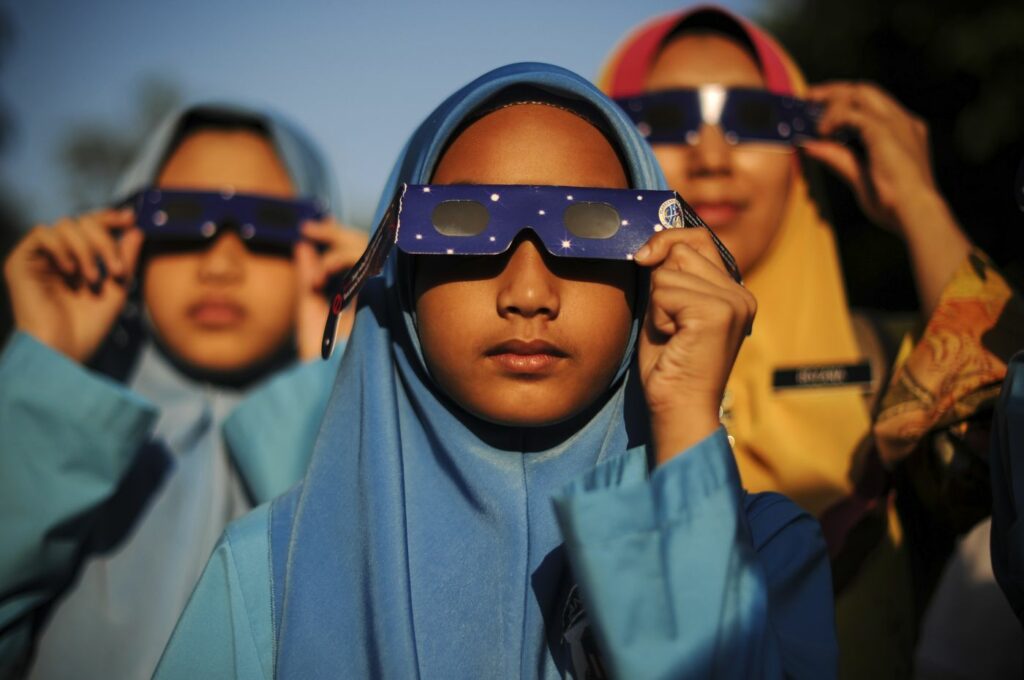
The solar eclipse on October 25
A partial solar eclipse will take place on October 25. It will not be an exceptional phenomenon. And, of course, you should not expect the end of the world as a result of it. But it definitely deserves the attention of people interested in astronomy.
In Kyiv, the eclipse will begin at 12:22 local summer time and last until 2:50 p.m. At its maximum (at 1:36 p.m.), the Moon will cover the Sun’s disk by 61% of its diameter. So if the weather is clear that day, nothing will prevent us from admiring this sight.
However, the eclipse will occur in the middle of the day, and not at sunset, so you need to be especially careful about safety measures and prepare in advance to observe it.
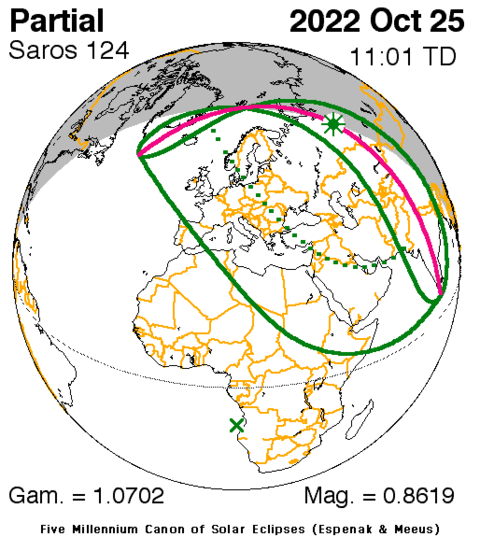
What danger does the Sun pose to our eyes?
The general rule when observing a solar eclipse is that you cannot look at the Sun with the naked eye. We usually do not notice it, but the intensity of its radiation is sufficient to damage the light-sensitive cells of the retina. After a burn caused by direct sunlight, it practically does not recover.
Moreover, it is impossible to look at the Sun through any optical device not prepared for this — binoculars or a telescope. Their lenses or mirrors collect the rays in one point and increase their intensity, due to which the burn of the retina would become much more severe. Most often, vision is lost forever in this case.
In principle, you can look at the Sun with the naked eye when it rises or sets. But it is better not to do this either, because the risk of getting a small burn of the retina remains. Therefore, even under these conditions, you cannot look at our star through binoculars or a telescope.
Equipment for observing a solar eclipse
There are several ways to safely see the Moon covering the Sun. The first of them is not to look directly at him at all. You can use the “Perseus method” — look not at the light itself, but at its reflection in a window or some other glass that does not have a special mirror coating. For reliability, you can let the sun’s rays reflect off two glass plates — then we will also get a “correct” image (not a mirror one).
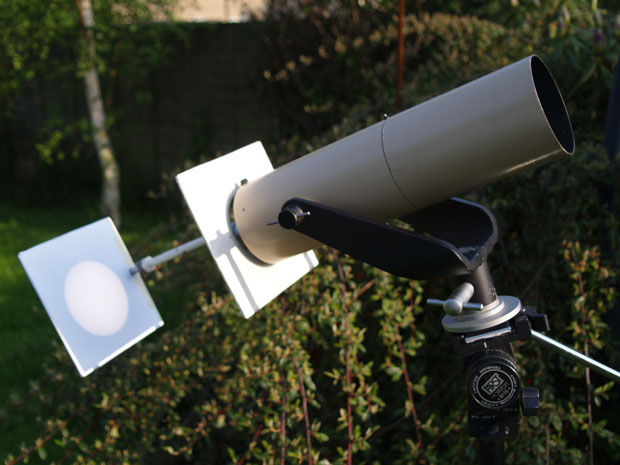
You can make a small hole in a sheet of paper with a needle and take it to a great distance from a flat light screen. The sun’s rays that have passed through the hole will form a small image of the darkened Sun — the greater is the distance to the screen, the bigger is the image. This technique was known to medieval Arab astronomers. Europeans called it the camera obscura.
Much larger and clearer images of the Sun’s disc can be obtained by projecting its rays, focused by even a small optical device, onto a white screen. Reflectors of the Newton system are especially convenient in this regard, allowing you to deflect the rays “aside” and place the screen in a dark place protected from direct sunlight.
However, modern technologies give us an even simpler and more reliable way. You can use a digital camera and set it up properly to get the sharpest possible image of the sun. Then the signal from it is sent to a laptop, so that you can safely observe the solar eclipse there.
But, of course, everyone would like to see the eclipse with their own eyes. And the easiest way to do this is using a specially equipped telescope. This tool gives not only sufficient magnification. Light filters that “cut off” all extra rays are also produced for it — and sometimes supplied as a set.
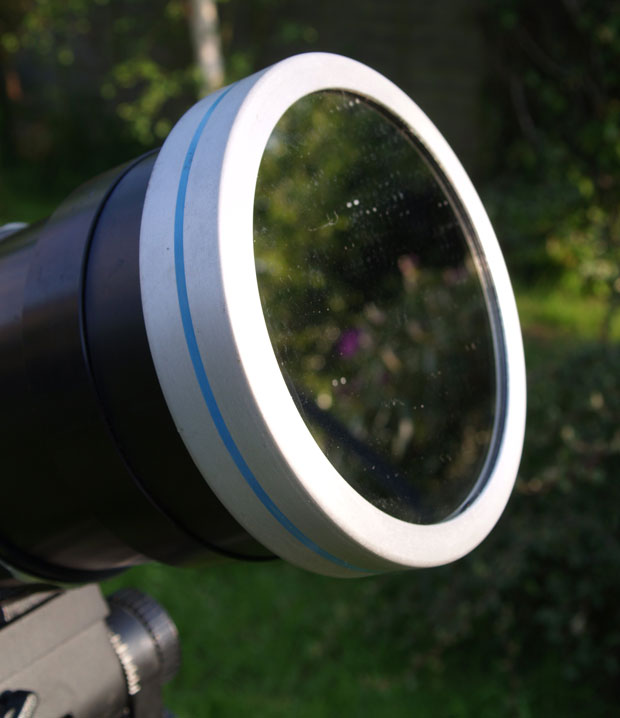
With binoculars, everything is a little more complicated. The light filters that are sold for them are not intended for observing the Sun, but for other purposes, and it is not prudent to look at our luminary through them. But there is a special film on sale, from which you can make a light filter yourself. The most famous is produced under the Baader Astrosolar brand.
Solar eclipse with your own eyes
There are ways to observe a solar eclipse without any optics. It must be said right away that ordinary sunglasses are not suitable for this. They delay electromagnetic waves of the visible part of the spectrum, but pass ultraviolet radiation. And although we can’t see it, it can leave a burn on our retina in the same way as when our skin gets sunburnt on a summer day
Welder’s glasses are much better suited for this. Usually, nothing can be seen through them, but if you look at the eclipse in them, you can watch the approach of the Moon without much danger. A mask used in welding works is also suitable for observation.
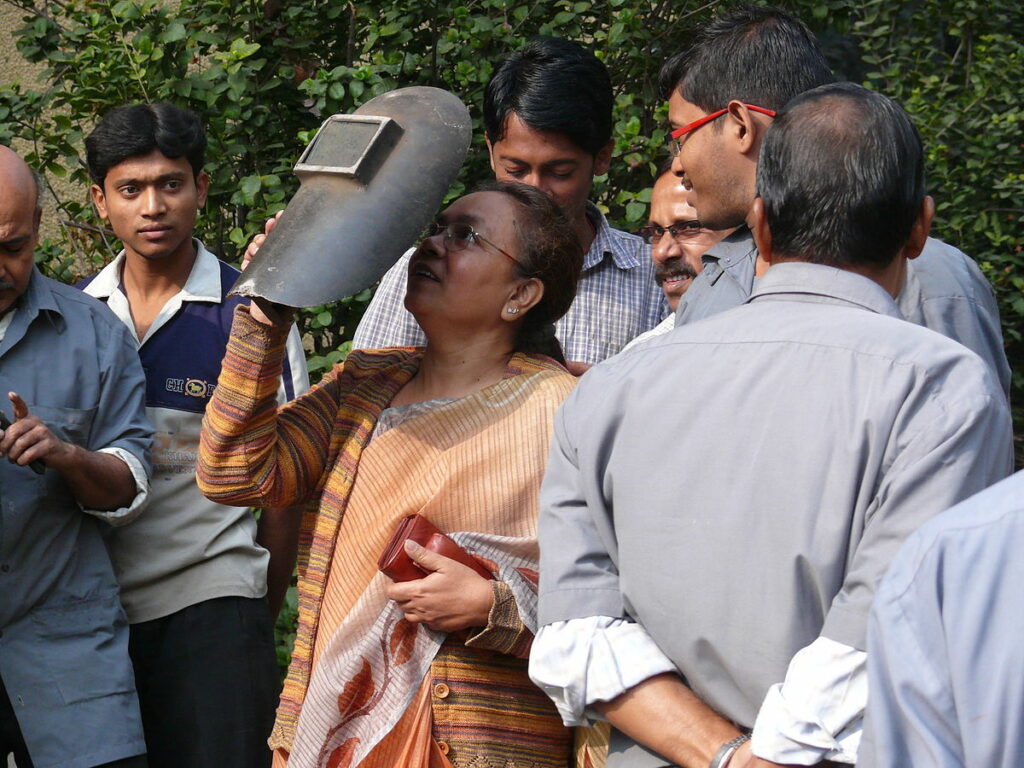
A light filter for observing the Sun can be made with your own hands. For this, you will need the same film from which you can make a sun screen for binoculars, and some kind of frame. It should not be too big, so that it is convenient to hold it in the hands, but not too small, so that it covers our luminary completely. Next, you need to stretch the film on the frame so that it is flat and does not sag anywhere — and now you have the analogue of a welder’s mask.
Finally, you can make a light filter from any transparent glass plate. This will require a flame that produces enough soot. Birch firewood, coal, fuel oil or an ordinary paraffin candle are best suited. It is necessary to blacken it to a state when nothing at all can be seen through the glass.
However, using this method is also not recommended. The resulting light filter is good enough, but working with glass and open fire itself can be quite risky.

